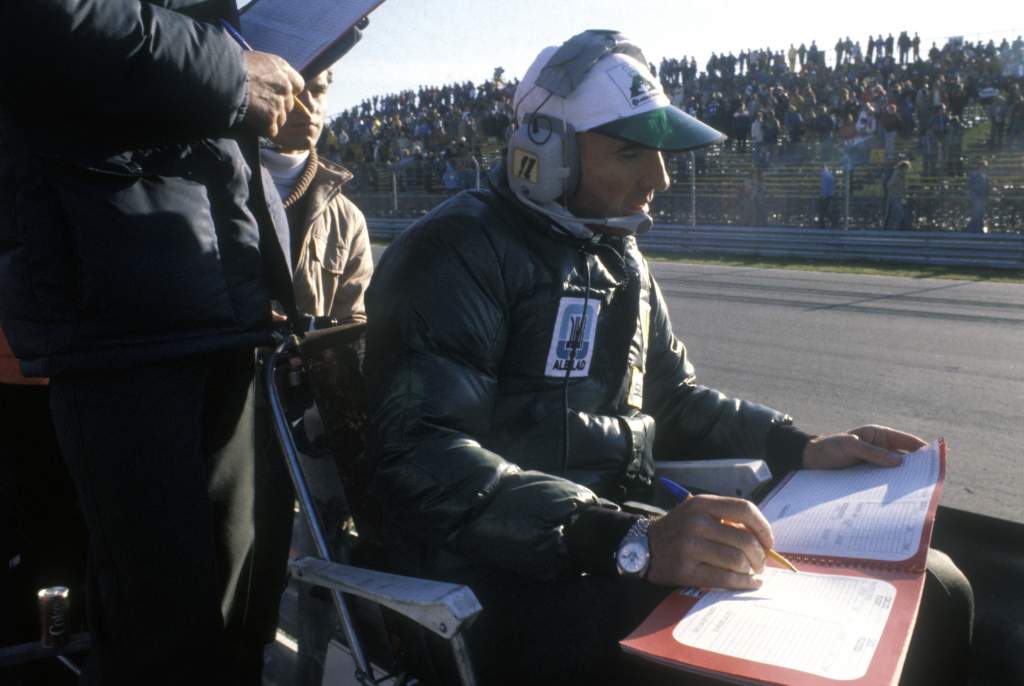Up Next

As co-founder and long-time team principal of one of Formula 1’s great grand prix teams, the late Sir Frank Williams had a profound impact on grand prix racing as well while also being an inspirational figure thanks to the life-changing effects of his 1986 road accident that paralysed him.
The team Williams started with Patrick Head for the 1977 season, which is now called Williams F1, has to date won nine constructors’ championships and run seven drivers to titles, as well as winning 114 races and taking 128 pole positions – only Ferrari, McLaren and Mercedes have eclipsed that record.
But Williams was active in motorsport for a long time before the creation of the iconic eponymous team, with sporadic success that only occasionally hinted at the heights that were to come.
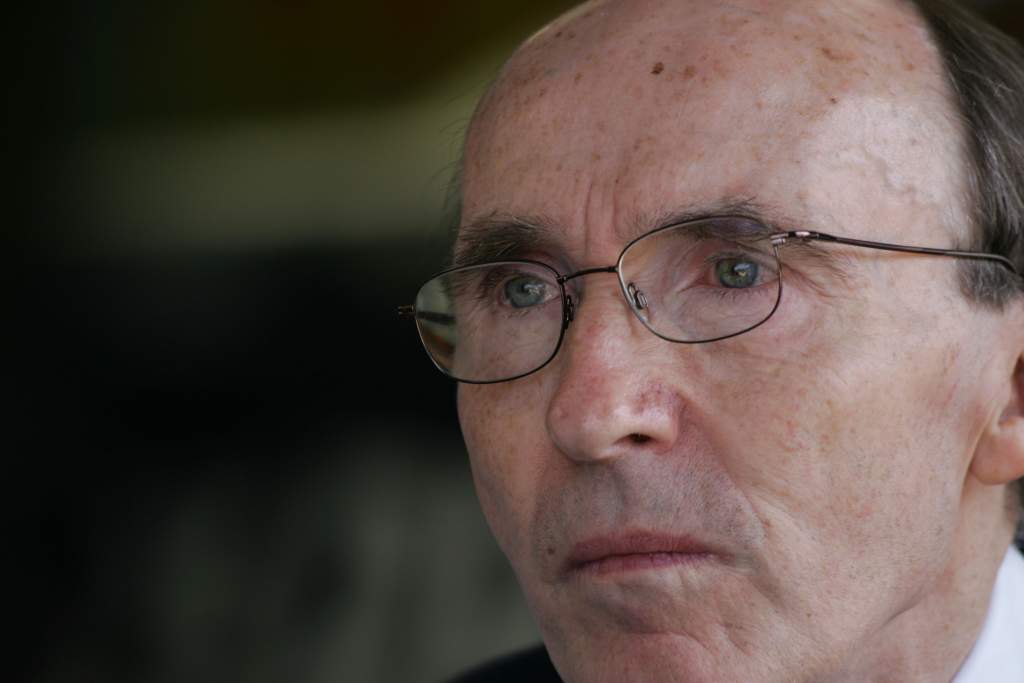
Born in South Shields in the North East of England, Williams dabbled as a driver behind the wheel of an Austin A35, which he shunted heavily at the fast Gerard’s right-hander at Mallory Park. After climbing from the car, he met fellow racer Jonathan Williams (no relation) who subsequently introduced him to Piers Courage.
Williams still had his own racing aspirations, later racing in Formula 3, and had worked as Formula Junior mechanic for both Jonathan Williams and Courage. But soon it became clear his talents lay in running cars for other people, and his Frank Williams Racing Cars team entered its first race in October 1967.
Courage won the first heat of the E.R.Hall Trophy Formula 3 race at Brands Hatch, failing to finish the final, and Williams the team boss was underway – aided by the fact he had also built up a tidy business as a car salesman.
In 1968, Williams ran Courage in a Brabham BT23C, with occasional appearances from other drivers – including a certain Max Mosley. Courage won at Enna and took seventh in the European Formula 2 Championship.
That year, Jonathan Williams also won the prestigious Monza Lottery Grand Prix for the team, while Courage also won a Temporada race in Buenos Aires late in the year. Williams then fielded Courage in an ex-works Brabham BT24 F1 car in the Tasman Series, with Courage finishing third overall and winning at Teretonga.
Williams had little interest in Formula 2 other than as a means to an end, so the next step was the world championship. Driving a new Brabham BT26A, Courage claimed second place on only the team’s second F1 start at Monaco. He added another at Watkins Glen, as well as fifth places at Silverstone and Monza on his way to ninth in the world championship.
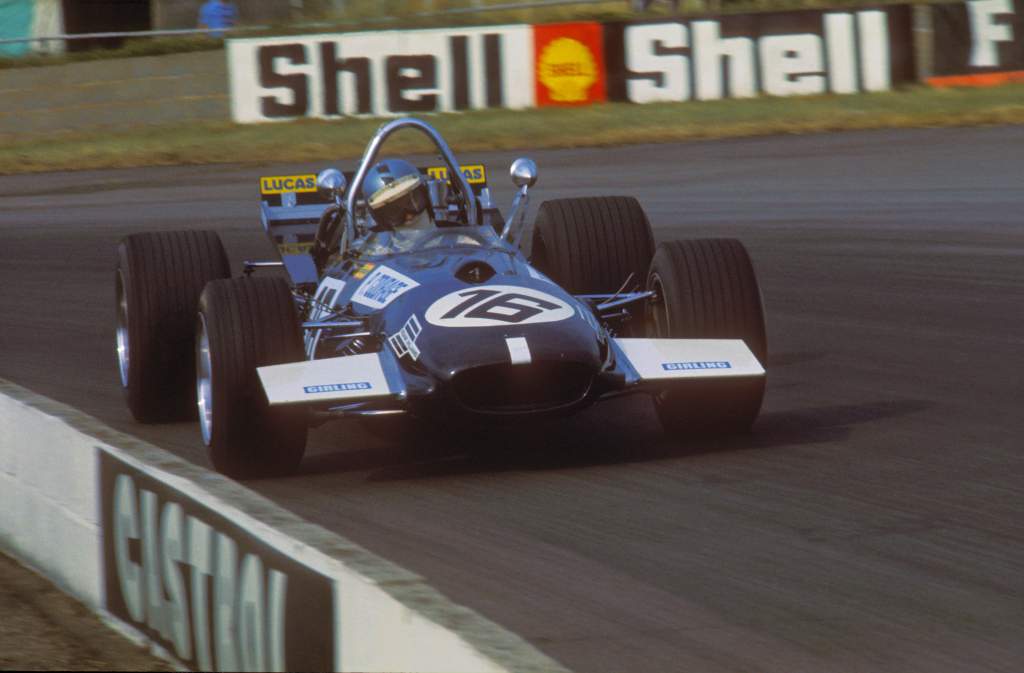
So far, so good, but things were to take a catastrophic turn for the worse in 1970.
Having been approached by Argentinian-born Alessandro de Tomaso during the Italian GP weekend in ’69, Williams agreed a deal whereby Modena-based de Tomaso would loan him with three chassis for free the following year.
Created by Gian Paolo Dallara, the car was fundamentally soundly designed, but underdeveloped. Courage remained despite interest from elsewhere, including from Ferrari, but other than third place in the International Trophy at Silverstone, results were non-existent.
Two months after that race, disaster struck in the Dutch Grand Prix when Courage crashed fatally in what was suspected to be the result of a mechanical failure. The subsequent inferno prevented a definitive cause being isolated.
Frank Williams kept going, with Brian Redman and Tim Schenken seeing out the season, but this was a difficult period as the hand-to-mouth team plugged away with a revolving cast of drivers.
“Suddenly I had no car, no driver, just an enormous number of debts,” said Williams of the impact of Courage’s death on his team. “My only tangible assets were two used DFV engines. To keep going I sold everything I had – my clothes, my watch.
“You wouldn’t believe some of the things I got up to – nothing dishonest, mind you, but I struggled and dodged and darted through the rest of 1970. I know lesser men would simply have let themselves go bankrupt.”
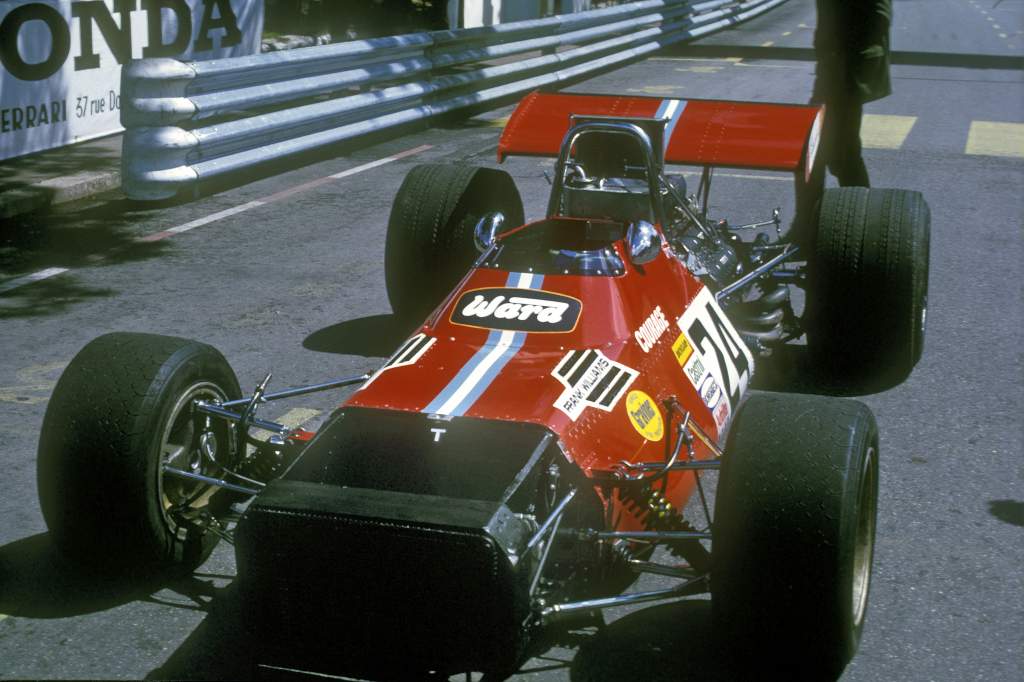
After de Tomaso pulled out, Williams ran customer Marches for the next two years, although from its Reading base the team produced its own car – dubbed the Politoys FX3 in deference to sponsorship from the Italian toy company. Designed by Len Bailey, with input from Ron Tauranac, the first F1 car produced by Frank Williams made an ignominious debut at the British Grand Prix at Brands Hatch.
Henri Pescarolo qualified last after fuel pressure and engine problems before crashing at Dingle Dell on lap eight after a suspension failure. The car’s only other appearance in that form came in the hands of Chris Amon at the non-points World Championship Victory Race at Brands Hatch, which ended with an engine failure.
The car reappeared the following season now under the Iso-Marlboro name. Williams, ever the sponsor-hunter, replaced Politoys and Motul backing with support from Marlboro and car company Iso-Rivolta. The FX3B was subsequently replaced by a new car designed by John Clarke.
The car was reworked by Gian Paolo Dallara as the Iso-Marlboro FW – the first car to carry the initials that would in future become indelibly linked with success. It picked up a third place in the hands of Arturo Merzario in the Grande Premio Presidente Emilio Medici at the Brasilia circuit, but results were hard to come by in world championship races, save for a fourth place at Monza. The three cars built that season to the same specification were dubbed the FW01, FW02 and FW03.
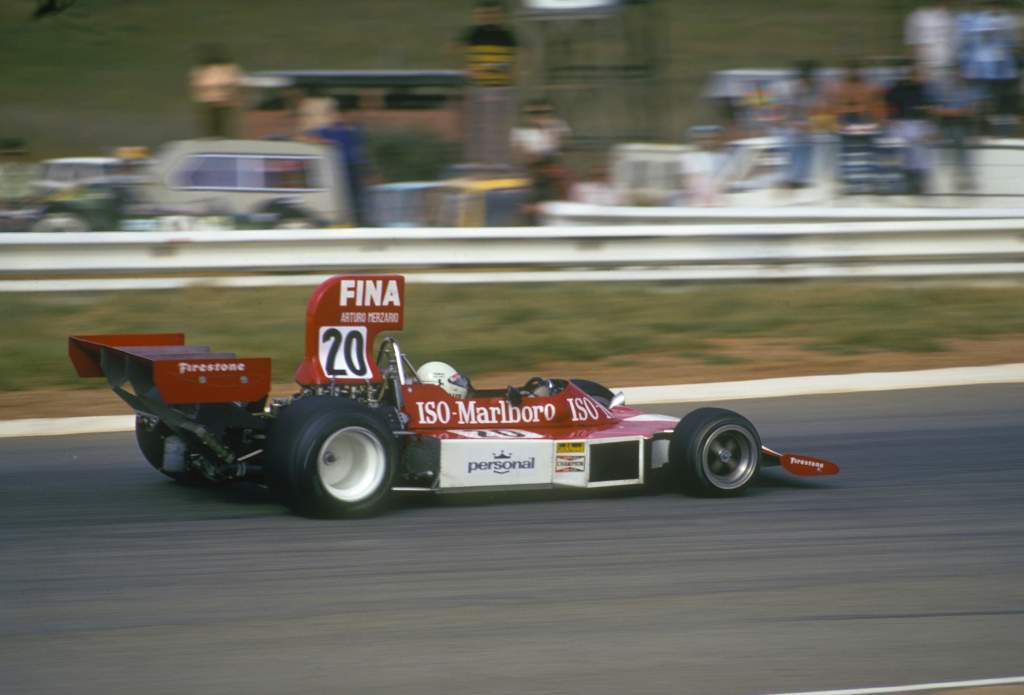
A new car, the slimline FW04, appeared during 1975 with Jacques Laffite taking a fortuitous but much-needed second place at the Nurburgring. But with financial troubles hitting hard and Laffite just one of 10 drivers to drive for Williams in world championship races, the team was in trouble.
Ahead of the 1976 season, Canadian oil millionaire Walter Wolf brought 60% of the team, which competed for the last time under the Frank Williams Racing Cars name at the Long Beach Grand Prix. Thereafter, it ran as Wolf-Williams, with the team founder in a management/commercial role but increasingly marginalised and looking for other opportunities.
Late in his involvement with the original team, Williams had brought young engineer Patrick Head on board. And when the time came to set up a new team, he made the inspired decision to go into partnership with Head. He later described this decision as the best one he ever made given it created the perfect balance of Williams the commercially-minded team boss and Head the engineering genius.
Williams and Head had a 70/30 split in the ownership of Williams Grand Prix Engineering that initially ran a customer March chassis for the well-funded Patrick Neve. Among the early employees was Ross Brawn, who had also briefly worked for the previous incarnation of the team.
Infamously, in the early days there were times when Williams had to use a telephone box as his office as he ducked and dive to keep things going. But in 1978 things started to come together.
Williams landed sponsorship from Saudia Airlines for ’78, which put the team on a firm financial footing. That allowed Head’s first F1 car, the Williams FW06, to establish the new Williams team as a credible one with Alan Jones finishing second at Watkins Glen.
The following year, things really took off. After a patchy start to the season, Clay Regazzoni won the team’s first race at Silverstone and Jones followed that up with four wins in five races to lay the foundations for winning the drivers’ and constructors’ championship a year later.
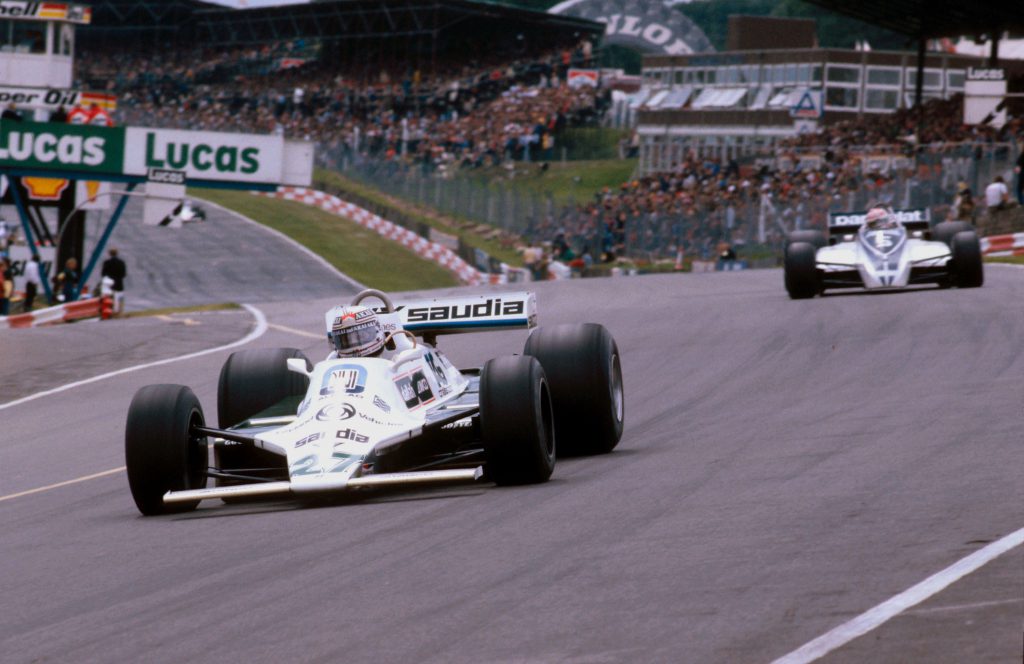
Jones narrowly missed out on repeating the trick in 1981 before retiring. While Keke Rosberg nicked the 1982 world championship the lack of a turbo engine meant Williams struggled – until Honda arrived thanks to Williams’s determination to land a manufacturer partner.
At the end of 1983, the first Williams-Honda made its debut and, after a tricky season the following year in which only Rosberg’s remarkable victory in Dallas hinted at the potential, the partnership really started to thrive. In 1984, Williams also upgraded from working out of rented industrial units and moved his team into new premises on Basil Hill Road in Didcot.
In ’85, Rosberg and new team-mate Nigel Mansell split four wins between them, and with Nelson Piquet recruited for ’86 to lead the team on a deal worth just over $3 million plus bonuses, the future looked bright for a Williams team that was now firmly established as an F1 powerhouse.
Then, everything changed for Frank Williams. While rushing to the airport after a test at Paul Ricard on 6 March 1986, Williams rolled the Ford Sierra hire car he was driving and suffered a broken neck.
His injuries left him a paralysed after a lifetime of being active. While Williams and his wife Virginia – they had married in 1974 – rightly focused on surviving, then recovering and then adapting, Head steered the team through an acrimonious season.
The Williams package was the strongest, but Mansell and Piquet, who felt he had been given assurances about being the number one driver from Williams despite those never being put in writing, took too many points off each other and McLaren driver Alain Prost stole the title.
Meanwhile, Frank Williams was fighting his own battle. Several times he came close to death but, remarkably, he was fit enough to attend the British GP at Brands Hatch just over four months after the accident. But far from fading into the background, Williams’s extraordinary spirit and determination allowed him to recover – as far as his body would allow – and take full control of the team once again and lead it to even greater heights.
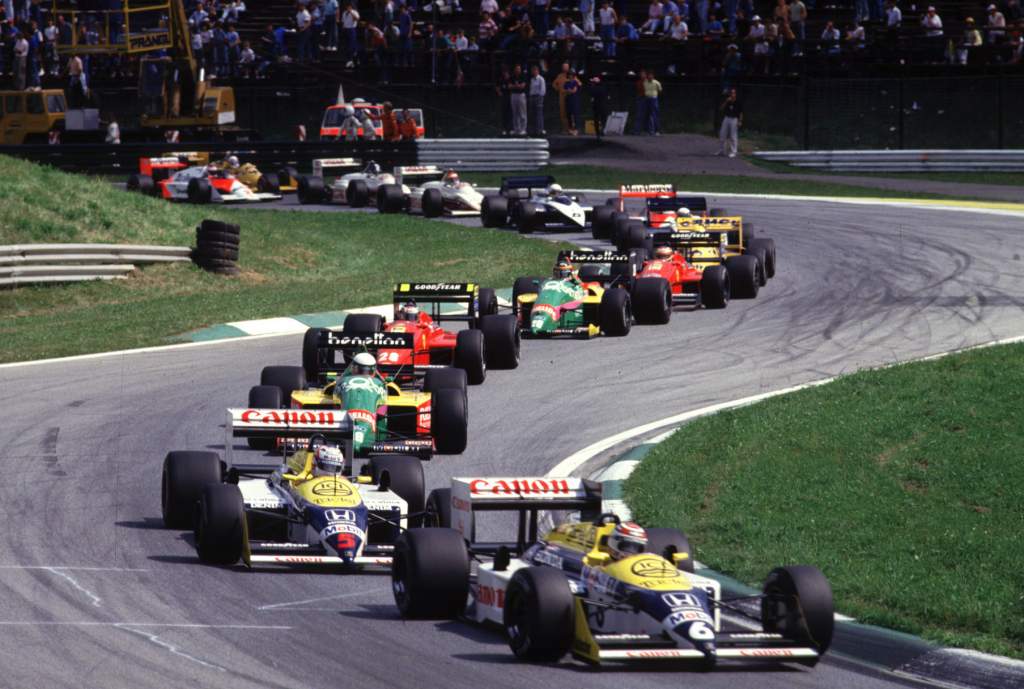
In 1987, the world championship battle was an all-Williams affair, with Piquet clinching the title after Mansell’s season was curtailed by a massive accident at Suzuka. But Williams was about to go through a dip, as when Honda asked for Satoru Nakajima to be placed with the team in ’88, Williams refused point blank. The cost was that it lost the Honda deal to McLaren, and Piquet to Lotus, with Riccardo Patrese recruited to run alongside Mansell for a season with normally-aspirated Judd engines.
It wasn’t a successful year, but it was a necessary evil for a new partnership with Renault was formed that would lay the foundations for Williams to dominate much of the 1990s. The unlikely return of the unretired Mansell in 1991 after he spent two years with Ferrari was one key piece of the puzzle, while the recruitment of Adrian Newey from Leyton House created one of the great design partnerships ever seen in F1.
These were the glory years for Williams, winning championships with Mansell, Alain Prost, Damon Hill and Jacques Villeneuve – the turnover of drivers earning him a reputation for being callous towards them. But the reality was he was always determined to secure the best and just has the pursuit of Prost had led to Mansell leaving, so did the pursuit of Ayrton Senna for 1994.
Senna was always the one who got away for Williams, having given him his first F1 test in 1983, and there had been talks over a lengthy period of time. But just three races into the alliance that was expected to yield multiple world championships, tragedy struck at Imola. While Williams himself was never one to show much emotion in public, favouring the classic British stiff-upper-lip, it’s reckoned that the loss of Senna, along with Courage 24 years earlier, hit him hard.
But life went on for the team and despite the lengthy legal proceedings in Italy that pursued Williams for years, the team rebuilt.
Hill had a run at the championship that year, with Williams taking the constructors’ championship, and more championships followed.
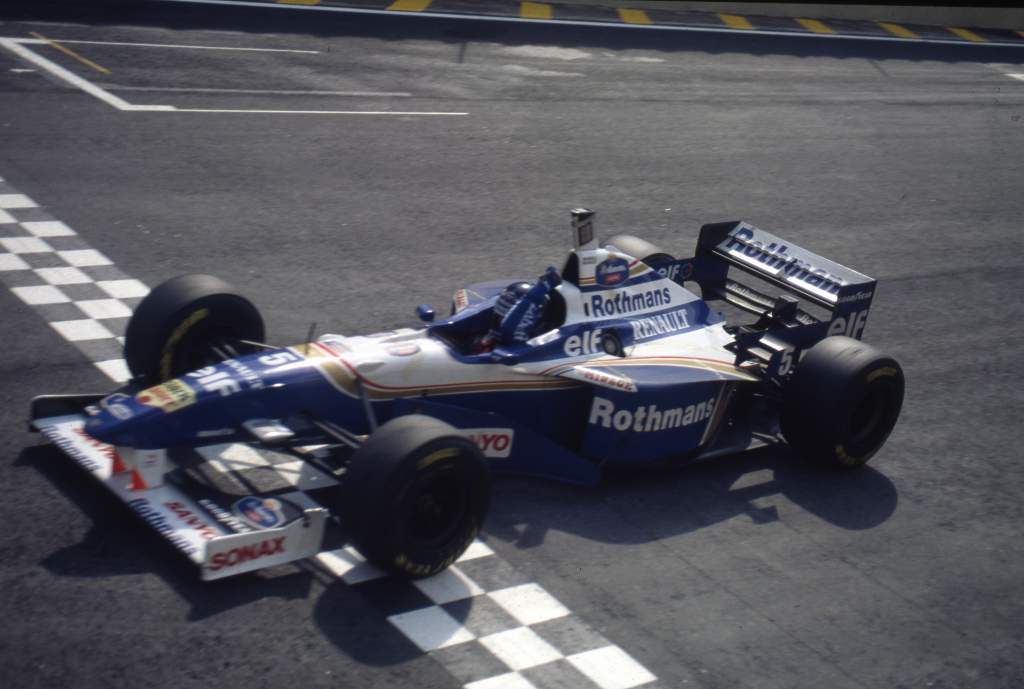
However, seismic changes then hit the team. A combination of Renault withdrawing at the end of 1997, forcing Williams to take on the Mecachrome/Supertec-prepared ‘continuation’ engines while it waited for its new alliance with BMW in 2000, and the departure of Adrian Newey early that year were big blows.
Frank Williams later admitted in an interview with F1 Racing that allowing Newey to leave for McLaren “was arguably, with hindsight, a mistake”. It was a rare error by Williams and contributed to the team’s failure to re-establish itself at the pinnacle of F1 ever since.
The BMW years were frustrating, with wins and, at times, probably F1’s most powerful engine. The ingredients were still there, but the unwillingness to sell control of the team to the German manufacturer proved to be a crucial turning point in the team’s history. Williams knew what the stakes were, as not only did it send the team down a customer engine path that it has not turned from to this day, but it also had financial implications given its lucrative title sponsorship deal with HP was contingent on BMW.
What followed was a period of financial retrenchment, with Williams having to make some pragmatic decisions such as taking Kazuki Nakajima on for 2008-9 as an alternative to paying for Toyota engines. There were also management changes, with Adam Parr joining as CEO in late 2006 to work closely with Williams in leading the. Parr eventually resigned in early 2012, a departure enforced by the wider politics of F1. The ownership of the team also started to shift, with Head selling part of his stake in 2009 and Toto Wolff investing.
While Frank Williams did succeed in keeping control of the team and keeping it afloat, these were difficult times. The cars produced by the team were erratic, and on occasions the strong ones – such as the FW34 of 2012 – were sometimes not done justice by the driver line-ups the team was forced to select.
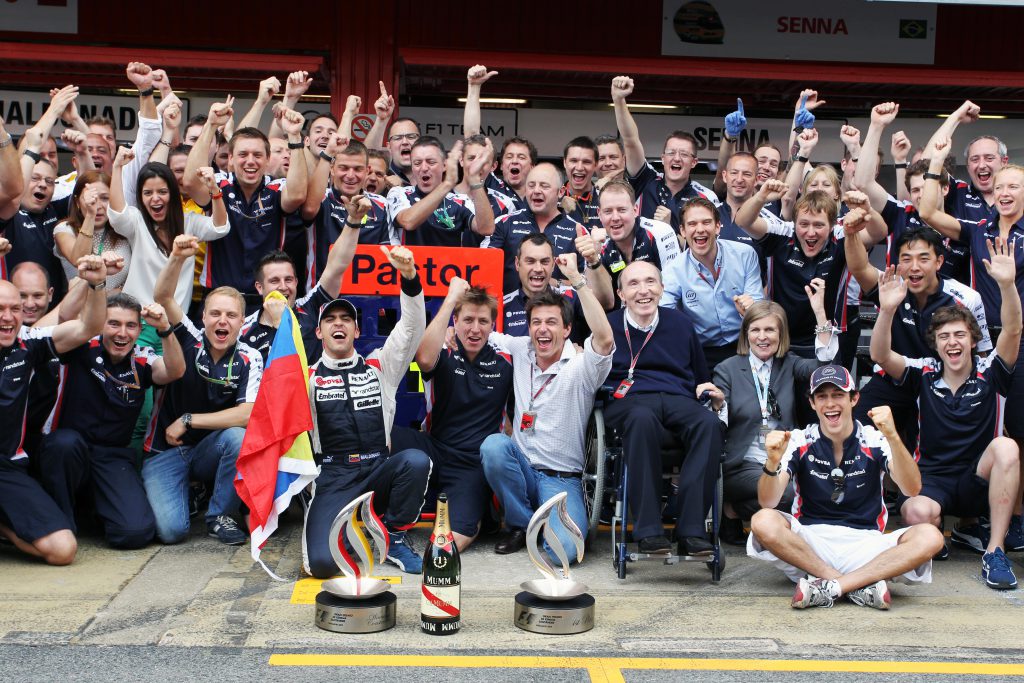
But there was a day of days at the 2012 Spanish Grand Prix when Pastor Maldonado claimed the latest victory – and the first in over seven years – for Williams. That weekend marked a celebration of Williams’s 70th birthday – albeit a month after the actual date – and thanks to the mercurial Maldonado and getting the capricious Pirelli rubber working, on top of a strong car, the seemingly impossible happened. After the race, as Williams addressed the team in the garage, a fuel fire erupted, fortunately with everyone escaping unharmed and the conflagration brought under control by personnel from Williams and rival teams.
Williams’s appearances at F1 races dwindled in recent times, the consequence of his failing health and the fact that the team had to focus its resources simply on surviving in a financial landscape it was no longer cut out for thanks in particular to the commercial terms agreed between the teams and F1 from 2013. These simply did not allow a team like Williams, sustained by its own financial strength rather than shareholder investment, to thrive.
While Williams retained the team principal title until the sale of the team to Dorilton Capital in 2020, daughter Claire Williams had by then long since been the de facto team boss in her role as deputy. The team struggled on but was unable to build on the success at the start of the V6 turbo hybrid era thanks to enforced under-investment. Simply surviving was a remarkable achievement.
In the end, the impact of the COVID-19 pandemic meant that its lines of credit had run out and a sale was the only option. By all accounts, the Williams family acted in the best interests of the team’s future success over and above personal gain in the sale in the hope of it leading to the long-awaited recovery.
Even in his later years, Frank Williams was still an inspirational figure at the team. He was regularly seen at the factory, where he effectively lived, by staff and continuing to be at the heart of this historic team. He would make an effort to speak to staff and be visible at the factory, literally as well as metaphorically part of the very foundations of Williams F1.
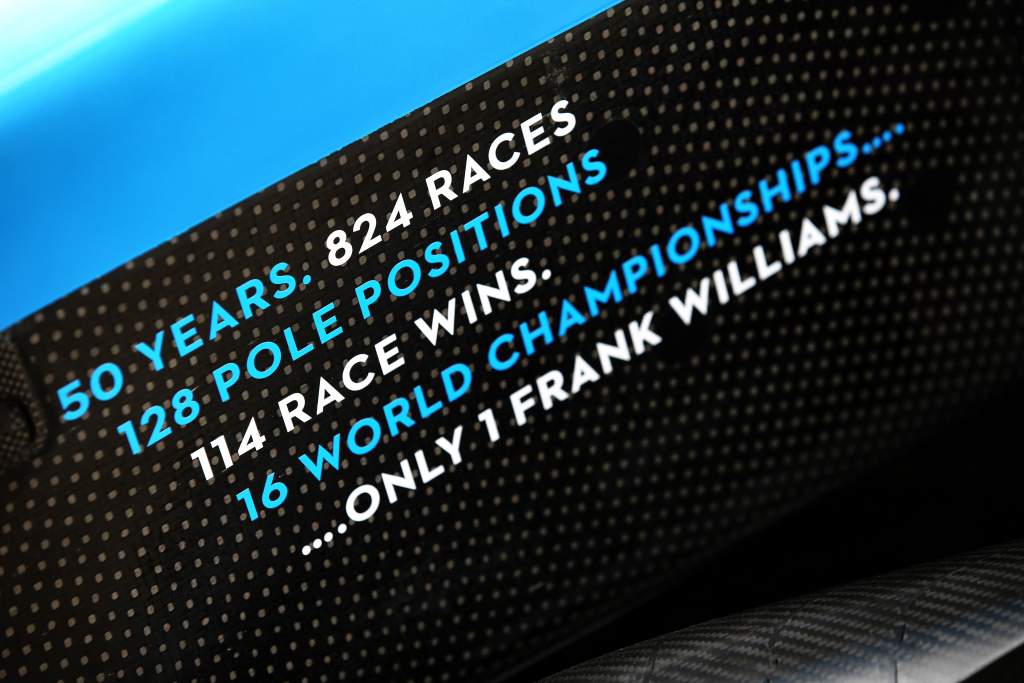
So much of what is written here is about the achievements of the Williams team rather than Frank Williams personally. The reason for that is simply that he and the team were indistinguishable from each other. It was his life and only through his sheer determination and inspirational leadership could it thrive.
What makes him extraordinary is that he was able to do this in unimaginable personal circumstances. Regardless of the fact he had the resources for the medical care, the sheer determination that he required simply to stay alive, let alone continue to steer Williams to success and somehow retain a wry sense of humour, is astonishing.
It’s well worth seeking out a copy of his wife’s book A Different Kind of Life to understand just how remarkable the story not just of Frank Williams, but the entire family, really is.


